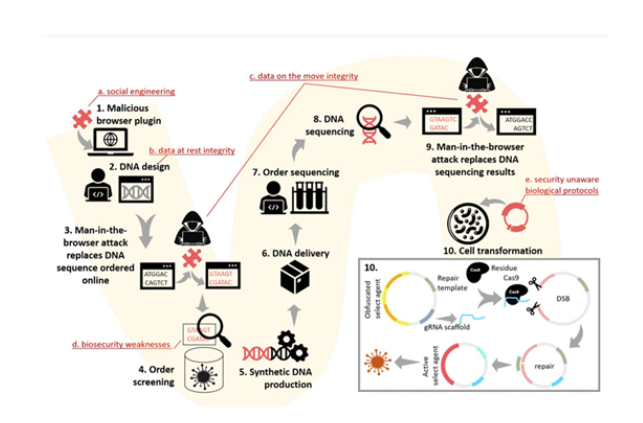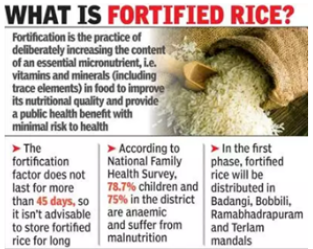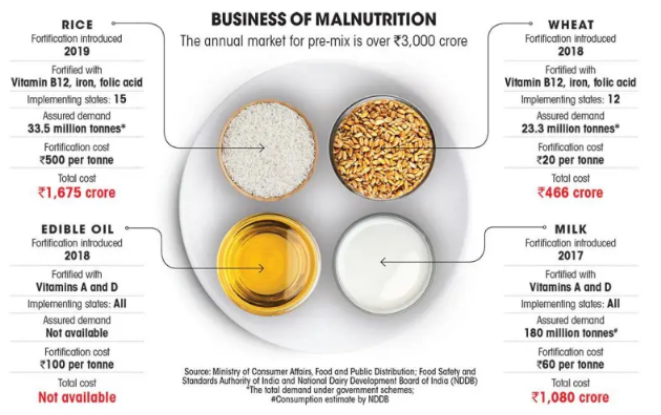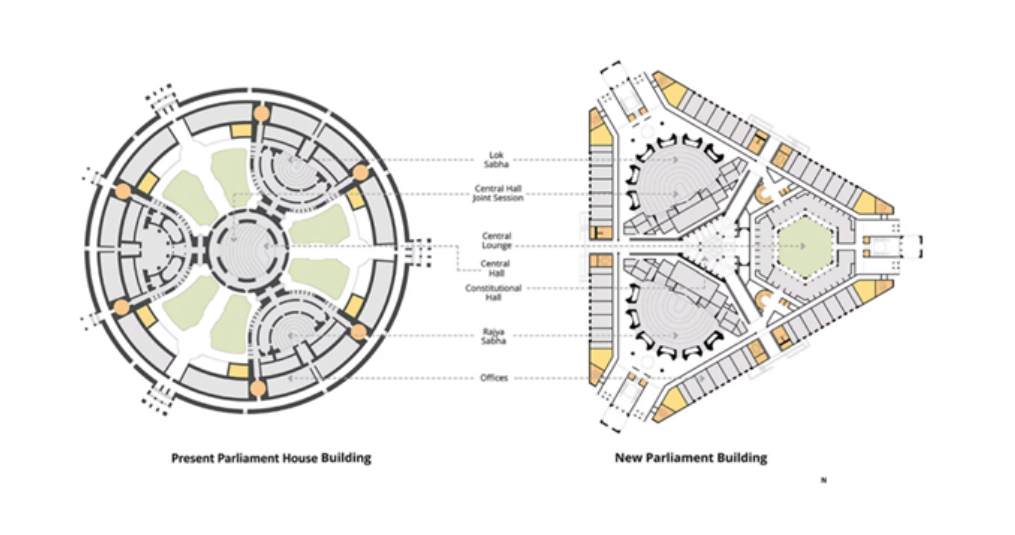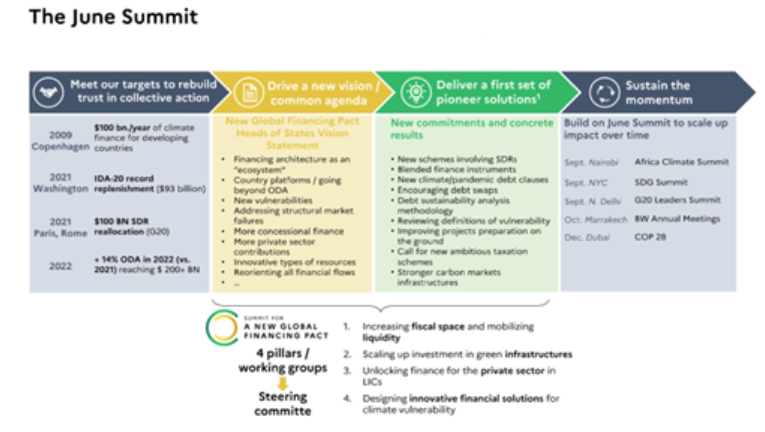Thursday, 21st September 2023
Deoxygenation in riverine ecosystems
In News: The findings of a study led by the Pennsylvania State University showed that of nearly 800 rivers across the United States and Central Europe, warming occurred in 87 percent and oxygen loss in 70 percent.
About the study:
- The study found that the rivers are warming and losing oxygen faster than oceans, and deoxygenation could “induce acute death” for certain aquatic species.
- Of nearly 800 rivers across the United States and Central Europe, warming occurred in 87 percent and oxygen loss in 70 percent.
- While urban rivers showed the most rapid warming, rural rivers witnessed the slowest warming but the fastest deoxygenation.
- The researchers also forecast future rates.
- Across all the rivers they studied, future deoxygenation rates were between 1.6 and 2.5 times higher than historical rates.
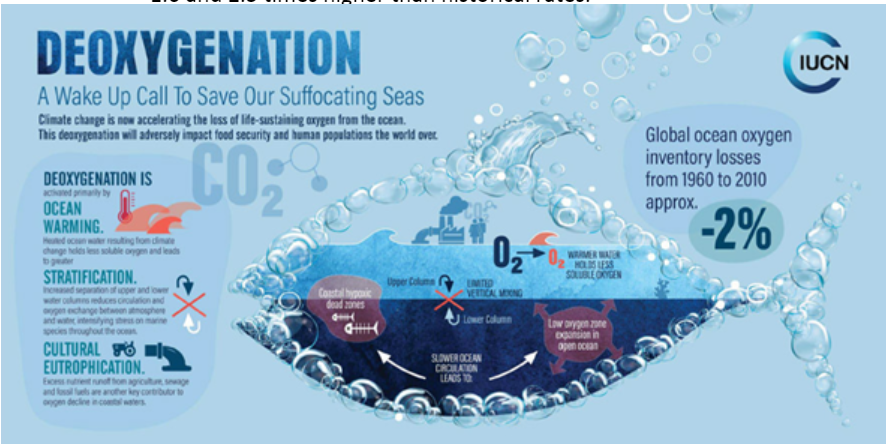 Why is this study significant?
Why is this study significant?
- The implications of deoxygenation on riverine ecosystems have historically been overlooked.
- And there are significant implications for water quality and the health of aquatic ecosystems worldwide.
- Though riverine water temperature and dissolved oxygen levels are essential measures of water quality and ecosystem health, they are poorly understood as they are hard to quantify.
- Lack of consistent data across different rivers and the myriad of variables involved that can change oxygen levels in each watershed are the reasons for flawed assessments.
What are the implications of deoxygenation on riverine ecosystems?
- Deoxygenation drives greenhouse gas emissions.
- It leads to the release of toxic metals.
- If the oxygen levels get low enough, it becomes dangerous for aquatic life.
- Within the next 70 years, certain species of fish could die out completely due to longer periods of low oxygen levels, according to the study.
- Coastal areas, like the Gulf of Mexico, often have dead zones in the summer.
- It is reducing the quality and quantity of suitable habitat, also known as habitat compression, reducing growth rate, changing visual function, interfering with reproduction, and increasing disease susceptibility.
UNCITRAL South Asia Conference
Why in News: Recently, India hosted the inaugural United Nations Commission on International Trade Law (UNCITRAL) South Asia Conference.
United Nations Commission on International Trade Law (UNCITRAL):
- It is the principal legal entity in the UN system that is dedicated to international trade law.
- It is a legal body with universal membership that specializes in commercial law reform worldwide.
- It is an international organization of lawyers that focuses on changing business law around the globe.
- For more than 50 years, it has worked to update and harmonise the laws governing transnational commerce.
- The main objective of UNCITRAL is to promote fairness, transparency, and efficiency in cross-border commercial transactions by developing legal frameworks and tools.
- India has been a member of UNCITRAL since its inception being one of the first 29 member states.
UNCITRAL South Asia Conference:
- The conference aimed to strengthen India’s engagement with UNCITRAL and encourage interaction between UNCITRAL, the judiciary, bureaucracy, academia, and the legal fraternity.
- It was organized jointly by the Ministry of External Affairs, UNCITRAL, and the organization’s national coordination committee for India.
- The conference covered various topics, including the digital economy, MSMEs and access to credit, insolvency, investor-state dispute settlement reform, international commercial arbitration, and mediation.
- It also discussed on alternative dispute resolution developments and how to make India a hub for arbitration.
Supra Thermal and Energetic Particle Spectrometer (STEPS)
Why in News: Recently, one of the seven instruments on board India's first solar mission, Aditya-L1, the Supra Thermal and Energetic Particle Spectrometer (STEPS) sub-system, has started gathering data.
Supra Thermal and Energetic Particle Spectrometer (STEPS):
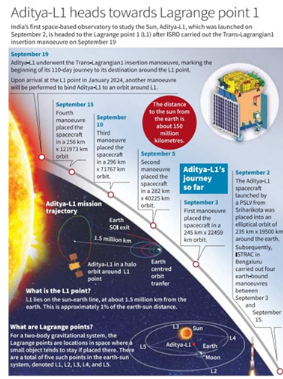
- It is a component of the Aditya Solar Wind Particle Experiment (ASPEX) payload on India's Aditya-L1 satellite.
- It is designed to measure swiftly moving charged particles produced by solar activities.
- STEPS offers useful information for solar science and space weather studies and aids with the analysis of the behaviour of particles orbiting the Earth.
Aditya L1:
- It was launched on 2nd September, 2023 and has left the Earth’s orbit towards the Earth-Sun System’s Lagrange 1 (L1) point.
- The objective of this mission is to study the Sun, its upper atmospheric dynamics (Chromosphere and Corona), and understand the physics of the Solar Corona and its heating mechanism for 5 years.
- The Polar Satellite Launch Vehicle (PSLV) has been used for its launch.
- Payloads on the satellite:
- Visible Emission Line Coronagraph (VELC)
- Solar Ultraviolet Imaging Telescope (SUIT)
- Solar Low Energy X-Ray Spectrometer (SoLEXS)
- High Energy L1 Orbiting X-Ray Spectrometer (HELIOS)
- Aditya Solar wind Particle Experiment (ASPEX)
- Plasma Analyser Package for Aditya (PAPA)
- Lagrange Points are the equilibrium positions in space where the gravitational forces of two large celestial bodies, like the Earth and the Sun, produce enhanced regions of attraction and repulsion.
- L1 point provides an unobstructed view of the Sun, even during phenomena like an eclipse; allow payloads to directly observe the Sun and makes the mission fuel efficient.

London’s India Club - Edukemy Current Affairs
In News: Recently, London’s India Club got closed permanently, which was a historic establishment that served as a meeting place for Indians in the United Kingdom during the independence movement.
About
- London's India Club was established in 1951 by the India League, an organization initially dedicated to advocating for Indian independence and later focused on promoting friendship between India and Britain post-independence. The India Club played a pivotal role in the lives of Asian diaspora communities in Britain.
- London’s India Club situated within the Strand Continental Hotel, this establishment not only offered delectable Indian cuisine but also served as a central meeting point for individuals associated with India in the UK. Its interiors remained remarkably preserved over the years, reflecting a rich history.
- The India Club hosted a variety of groups and activities, including the Indian Journalist Association, Indian Workers Association, and Indian Socialist Group of Britain.
- Throughout its existence, the India Club attracted distinguished visitors, including Dr. Rajendra Prasad, the inaugural President of independent India, Lord Mountbatten, the final Viceroy of India, Jawaharlal Nehru, Dadabhai Naoroji, Bertrand Russell, and MF Hussain, among others. VK Krishna Menon, a diplomat and former Indian Defence Minister, served as one of the secretaries of the India Club.
https://indianexpress.com/article/explained/explained-history/london-india-club-shut-down-8944049/
SHREYAS scheme - Edukemy Current Affairs
In News: According to the Ministry of Social Justice and Empowerment the “SHREYAS” has played a significant role in empowering students from Scheduled Castes (SC) and Other Backward Classes (OBC) in India since 2014-15.
About
The umbrella scheme of "SHREYAS" comprises 4 central sector sub-schemes namely "Top Class Education for SCs", "Free Coaching Scheme for SCs and OBCs", "National Overseas Scheme for SCs" and "National Fellowship for SCs".
About the Subscheme of SHREYAS
- Free Coaching Scheme for SCs and OBCs: The objective of the Scheme is to provide coaching of good quality for economically disadvantaged Scheduled Castes (SCs) and Other Backward Classes (OBCs) candidates to enable them to appear in competitive and entrance examinations
- Top-Class Education for SCs: The Scheme aims at recognizing and promoting quality education amongst students belonging to SCs, by providing full financial support. The Scheme will cover SC students pursuing studies beyond the 12th class.
- National Overseas Scheme for SCs: Under this scheme financial assistance is provided to the selected students from SCs (115 slots); De-notified, Nomadic, and Semi-Nomadic Tribes (6 slots); landless agricultural laborers and traditional artisan categories (4 slots), for pursuing masters and Ph.D. level courses abroad.
- National Fellowship for SC Students: Under the scheme, fellowship is provided to Scheduled Castes students for pursuing higher education leading to M.Phil/Ph.D. degrees in Sciences, Humanities, and Social Sciences in Indian Universities/Institutions/ Colleges recognized by University Grants Commission (UGC).
Kisan Rin Portal - Edukemy Current Affairs
In News: Recently, the government launched the Weather Information Network Data Systems (WINDS) portal and the “Kisan Rin Portal”.
About Kisan Rin Portal:
- The Kisan Rin digital platform aims to provide a holistic perspective on farmer-related information, encompassing details about scheme utilization progress, loan disbursement specifics, and claims for interest subvention.
- Kisan Rin Portal was launched as part of the Kisan Credit Card (KCC) scheme to revolutionize the agriculture sector.
- This initiative seeks to foster improved collaboration with financial institutions, streamlining the process of granting agricultural credit for enhanced efficiency.
Weather Information Network Data Systems (WINDS) portal:
- WINDS harnesses sophisticated weather data analytics to furnish stakeholders with actionable insights for making informed decisions pertaining to agriculture and weather-related matters.
- The portal also comprises a comprehensive manual designed to assist stakeholders in comprehending its functionalities, interpreting data, and maximizing its effective utilization.
Operation Sajag - Edukemy Current Affairs
In News: Recently, the coastal security drill ‘Operation Sajag’ conducted by the Indian Coast Guard along the west coast
About
- Operation Sajag was organized by the Indian Coast Guard along the western coastline and engaged all key participants within India's coastal security framework.
- A total of 118 vessels, including those representing Customs, Marine Police, Ports, and the Indian Navy, actively participated in this exercise.
- The primary objective of this drill is to reaffirm and evaluate the effectiveness of the coastal security apparatus while concurrently raising awareness among fishermen operating at sea.
- Operation Sajag has formalized efforts related to island security and community interaction programs under the broader coastal security framework.
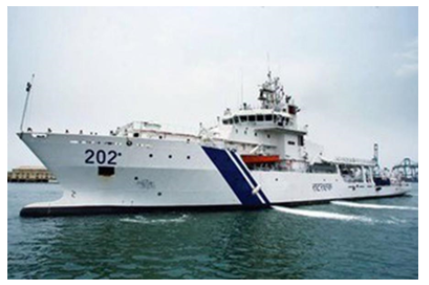
Narmada River - Edukemy Current Affairs
In News: Severe rains in Gujarat caused the Narmada River to flood, displacing thousands.
About:
- Some blame the Sardar Sarovar Dam operators for their delayed actions.
Narmada River
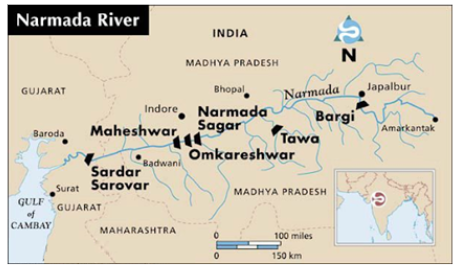
- Narmada is the largest west flowing river of the peninsular region flowing through a rift valley between the Vindhya Range on the north and the Satpura Range on the south.
- It rises from Maikala range near Amarkantak in Madhya Pradesh.
- It flows through Madhya Pradesh, Maharashtra, and Gujarat before reaching the Gulf of Cambay.
- The river near Jabalpur (Madhya Pradesh) forms the DhuanDhar Falls.
- It is the fifth largest river in India.
- Major Tributaries: Hiran, Orsang, the Barna and the Kolar.
- Notable dams in the Narmada Basin include the Sardar Sarovar Dam, Rani Avanti Bai Sagar (Bargi) Dam, and Maheshwar Dam.
Sardar Sarovar Dam
- The Sardar Sarovar Dam is a concrete gravity dam erected on the Narmada River near the town of Kevadiya in Gujarat’s Narmada District.
- The dam was constructed to provide water and electricity to four Indian states: Gujarat, Madhya Pradesh, Maharashtra, and Rajasthan.
- The dam is located on the boundary between Gujarat and Maharashtra in Gujarat’s Narmada district.
- To the west of the dam lies the Malwa plateau of Madhya Pradesh.
Biohacking - Edukemy Current Affairs
In News: Biohacking has gained more attention and popularity in recent years.
About:
- Biohacking is the practice of modifying and enhancing human biology and physiology, often using technological and genetic interventions, to improve various aspects of health, cognition, and physical capabilities.
- It is using various methods, such as diet, supplements, devices, implants, or genetic engineering, for modifying or enhancing one’s own body or biology.
- The most well-known type of biohacking is genetic engineering, where individuals experiment with new technologies to enhance their physical appearance or capabilities.
- However, biohacking also raises ethical and safety concerns, particularly when individuals engage in risky or unproven procedures.
More Information:
- Example: Biohacking: Elon Musk’s brain-chip startup, Neuralink, has received approval to begin the first human trial of its brain implant designed for paralysis patients.
- The trial will focus on individuals with paralysis due to cervical spinal cord injury or amyotrophic lateral sclerosis.
- Neuralink aims to implant a brain-computer interface (BCI) to allow participants to control a computer cursor or keyboard using their thoughts.
Share the article
Edukemy’s Current Affairs Quiz is published with multiple choice questions for UPSC exams
MCQ
Get Latest Updates on Offers, Event dates, and free Mentorship sessions.

Get in touch with our Expert Academic Counsellors 👋
FAQs
UPSC Daily Current Affairs focuses on learning current events on a daily basis. An aspirant needs to study regular and updated information about current events, news, and relevant topics that are important for UPSC aspirants. It covers national and international affairs, government policies, socio-economic issues, science and technology advancements, and more.
UPSC Daily Current Affairs provides aspirants with a concise and comprehensive overview of the latest happenings and developments across various fields. It helps aspirants stay updated with current affairs and provides them with valuable insights and analysis, which are essential for answering questions in the UPSC examinations. It enhances their knowledge, analytical skills, and ability to connect current affairs with the UPSC syllabus.
UPSC Daily Current Affairs covers a wide range of topics, including politics, economics, science and technology, environment, social issues, governance, international relations, and more. It offers news summaries, in-depth analyses, editorials, opinion pieces, and relevant study materials. It also provides practice questions and quizzes to help aspirants test their understanding of current affairs.
Edukemy's UPSC Daily Current Affairs can be accessed through:
- UPSC Daily Current Affairs can be accessed through Current Affairs tab at the top of the Main Page of Edukemy.
- Edukemy Mobile app: The Daily Current Affairs can also be access through Edukemy Mobile App.
- Social media: Follow Edukemy’s official social media accounts or pages that provide UPSC Daily Current Affairs updates, including Facebook, Twitter, or Telegram channels.


